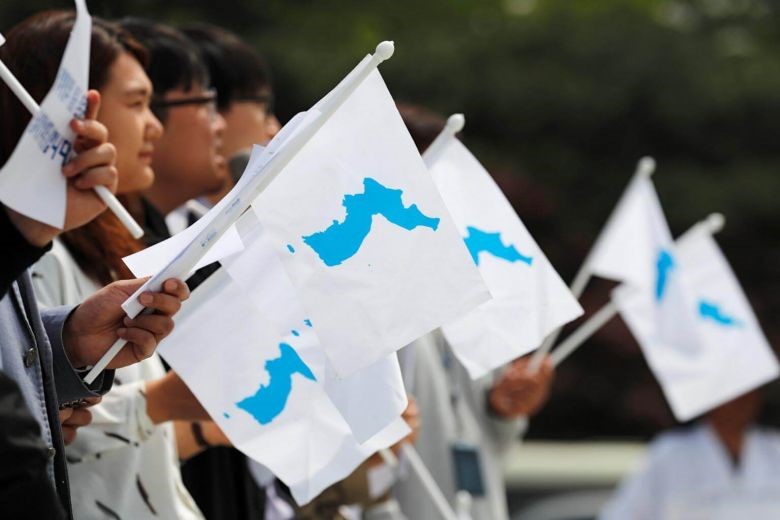
Jacob Inglis is a junior from Huntsville, Alabama majoring in International Studies and minoring in Korean, Asian Studies, and the Randall Research Scholars Program with an interest in Inter-Korean politics and diplomacy.
The world watched over the past year as war on the Korean Peninsula, an inevitable outcome according to North Korea, seemed poised to reignite. Amidst the backdrop of the controversial deployment of additional anti-ballistic missile systems, the testing of North Korea’s newest intercontinental ballistic missile capable of hitting the mainland U.S, and the alleged detonation of a hydrogen bomb by North Korea, tensions on the Korean Peninsula were at their highest point in the decade since the relationship between North and South Korea deteriorated following the failure of the former South Korean President Kim Dae-Jung’s Sunshine Policy in the mid-2000s. However, the start of 2018 brought an unexpected opportunity for diplomacy when North and South Korea agreed to enter the Olympic stadium under the joint Korean Unification flag (pictured above) at the Pyeongchang Winter Olympic Games.
However, not everyone in South Korea welcomes the recent diplomatic developments, presenting a challenge for South Korean President Moon Jae-In. Since the Pyeongchang Olympics, President Moon has emerged as the leading figure of the ongoing diplomatic effort on the Korean Peninsula, participating in three Inter-Korean summits and serving as an unofficial mediator between North Korean leader Kim Jong-Un and President Donald Trump. The third Inter-Korean summit last week resulted in several noteworthy agreements between the North and South aimed at easing tensions and furthering the denuclearization of North Korea. Highlights include the announcement that controversial ballistic missile testing facilities will be dismantled in the presence of international experts, plans for linking North and South Korean railway and road systems, and the announcement of a joint proposal to host the 2032 Summer Olympics on the Korean Peninsula. As with any political endeavor, Moon faces criticism from the public as well as members of the South Korean National Assembly. Most recently, conservative members of the National Assembly have criticized the Moon administration for its handling of the economic planning and the costs necessary for the ratification of the previous Inter-Korean agreement signed in April.
So what tools does President Moon Jae-In have to help navigate the complicated world of politics and public opinion? The Moon administration employs strategies that seek to use common forms of South Korean national identity to preempt criticism and gather public support for government policy. How an individual chooses to construct their relationship to a national entity is highly contextual and subject to influence by a variety of ethnic, cultural, and transhistorical realities. Through public comments and official government documents, the Moon administration seeks to promote and maintain a specific ethnically-driven construction of South Korean national identity to engender support for the current Inter-Korean policy regime. This approach portrays relations between the North and South less as a relationship between two opposing political entities than as two nations tied together by shared ethnic and historical origins.
During the recent September summit, President Moon was quoted as saying that Kim Jong-Un has “answered to the wishes of the Korean people” through the agreements affirmed by the September Pyongyang Joint Resolution. While describing his view of the North Korean border as he flew to Pyongyang, President Moon also stated that “no signs of division were visible at all.” On one hand, these comments can be characterized as standard, politically motivated statements of little significance; however, the language Moon uses is important to note. Moon is appealing to and promoting a specific, ethnically-based construction of national identity prominent in South Korean discourse to support the ongoing diplomatic mission and undercurrent of reunification. Statements like these, intended to craft a particular image of the summit for primarily domestic audiences in South Korea, emphasize the shared ethno-geographical ties between North and South Korea while intentionally de-emphasizing the political and ideological separation that is the current reality on the Korean Peninsula. This approach appeals to a generally common, but certainly not all-pervasive, sense of what factors constitute the Korean national identity. Portraying these factors that connect South Koreans to North Koreans as inherent and natural to life as a Korean serve to preempt or discredit objections based on economic, security, or other factors that make this diplomatic process less attractive for the public and legislators.
The September Pyongyang Joint Resolution signed by Moon Jae-In and Kim Jong-Un also contains examples of language intentionally chosen to craft a similar image for a larger audience, both domestic and foreign. Section 4 of the Joint Resolution states that the “South and North agreed to promote cooperation and exchange in various areas in order to further the atmosphere of reconciliation and unity and to show off the inner and outer spirit of our people.” Within examples of this unitary language, such as the term “our people” in the Joint Declaration, there is a recognition of the national separation between North and South Korea, along with an implicit rejection of its significance in the construction of Korean national identity. Furthermore, the inclusion of such language in a treaty document, legally binding upon its ratification, gives President Moon another avenue to promote the construction of an ethnically-based national identity that he can then use to help justify a number of expensive or potentially unpopular policies, along with the associated economic, military, and social projects required as he seeks to realize his administration’s slogan of “a Korean Peninsula without nuclear weapons or nuclear risk.”
Photo of students holding the Unification Flag sourced from Reuters.